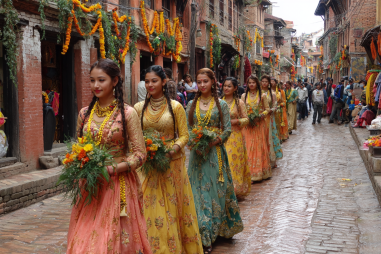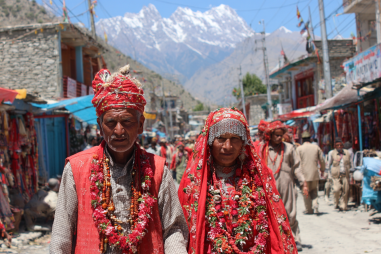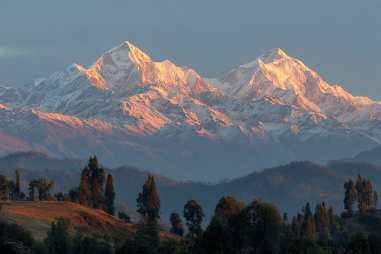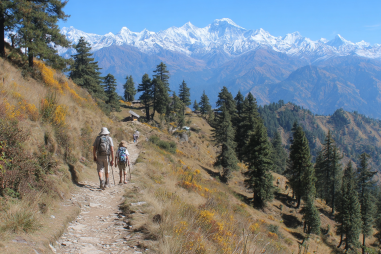Trekking through Bardia National Park is a thrilling way to immerse yourself in one of Nepal’s most pristine wilderness areas. Whether you are a nature enthusiast, a wildlife lover, or simply someone seeking the peace that comes with exploring verdant forests and tranquil landscapes, Bardia offers a variety of trekking routes tailored to diverse interests and fitness levels. From short day walks to longer multi-day adventures, each trail presents its own unique experience filled with abundant flora, diverse fauna, and breathtaking scenery.
Overview of Trekking in Bardia National Park
Bardia National Park, located in the Terai region of Nepal, is renowned for its rich biodiversity, spanning dense forests, grasslands, rivers, and marshlands. Trekking here is unlike the mountainous trails Nepal is famous for; instead, it provides lowland jungle explorations that bring trekkers closer to some of the country’s rarest wildlife, including Bengal tigers, one-horned rhinoceros, and Asian elephants. The trails weave through varied habitats, making each step a discovery.
Because the park is less commercialized and crowded compared to other natural reserves, trekking here offers a quieter, off-the-beaten-path adventure. This makes it a perfect destination for travelers who want more intimate encounters with nature and local Tharu culture, which flourishes around the park’s borders.
Popular Short and Long Trekking Routes
Bardia National Park caters to trekkers seeking both quick exploratory hikes and longer, more challenging routes. Some popular trekking options include:
- Short Day Treks: The Karnali River Trail and the Thakurdwara to Gulariya forest walks are excellent for quick immersions into the park’s environment. These easy-to-moderate trails take you through lush bamboo and sal forests, perfect for birdwatching and spotting small mammals.
- Half-Day Combined Nature Walks: Typical routes include guided walks along the Babai River or through the Chisapani wetlands, providing opportunities to observe rhinos, deer, and numerous bird species while soaking in the serene river landscape.
- Multi-Day Treks: For those wanting a longer adventure, the Bardia Circuit Trek is a favorite. Spanning several days, this trek loops around the park’s perimeter, traversing dense jungle trails, riverbanks, and villages. Camp or lodge stays provide local culinary experiences and cultural connections. The multi-day trek offers multiple wildlife viewing chances and includes early morning and late afternoon game walks led by park rangers or experienced guides.
Key Sights and Wildlife Encounters on Trails
Trekking in Bardia National Park is synonymous with rich wildlife encounters against a stunning natural backdrop. Key sights along the trekking routes include:
- Bengal Tigers: One of the park’s highlights, though elusive, tigers can sometimes be spotted or tracked with the help of knowledgeable guides.
- One-Horned Rhinoceros: These magnificent creatures roam the grasslands and wetlands, often seen during morning or evening walks.
- Asiatic Elephants: Occasionally encountered in the forested regions, these gentle giants add to the thrill of the experience.
- Birdlife: Bardia boasts over 450 bird species, including the great hornbill, oriental pied hornbill, and various kingfishers, providing constant interest for avid birders.
- Flora and Landscapes: Trekking routes wind through sal forests, grasslands dotted with wildflowers, riverine forests, and marshes—each offering a snapshot of the park’s ecological diversity.
Preparation and Gear Requirements
Proper preparation is essential for a successful trekking experience in Bardia. Although the terrain is relatively flat compared to Nepal’s Himalayan treks, the jungle environment demands careful planning:
- Clothing: Lightweight, breathable, and moisture-wicking layers work best to handle humidity and occasional rains. Long sleeves and pants help protect against insects.
- Footwear: Comfortable and sturdy hiking boots with good ankle support are important to navigate uneven jungle trails and muddy patches.
- Essential Gear: Carry insect repellent, a wide-brimmed hat, sunscreen, a reusable water bottle or hydration pack, binoculars for wildlife viewing, and a first aid kit.
- Navigation Aids: While you may be trekking with a guide, maps and a GPS device or smartphone with offline maps can be useful backups.
- Camping Equipment: For multi-day treks, tents and sleeping bags may be provided by tour operators, but it is advisable to confirm this ahead of time.
Safety Advice and Permit Information
Trekking in a wildlife-rich national park comes with safety considerations that trekkers must observe:
- Wildlife Safety: Never approach or feed animals. Maintain a safe distance, especially from large mammals like rhinos and elephants. Follow your guide’s instructions during encounters.
- Health Precautions: Carry anti-malarial medication as advised, stay hydrated, and avoid walking after dark to reduce risks from insects and wildlife.
- Park Permits: All visitors require official permits issued by the Nepal Department of National Parks and Wildlife Conservation (DNPWC). These can be obtained through authorized tour operators or at the park’s entrance gate. Ensure you carry valid identification when trekking inside the park.
- Weather Awareness: The best time to trek is during the dry season from October to March. Monsoon months bring heavy rains, trail muddy conditions, and increased insect activity.
Guided Versus Self-Guided Trekking
Choosing between a guided trek and going self-guided largely depends on your experience, interests, and comfort with jungle environments:
- Guided Treks: Most travelers prefer guided treks in Bardia National Park due to the dense jungle environment and wildlife risks. Guides and naturalists provide valuable insights on flora, fauna, and local communities, enhance safety, and help interpret subtle wildlife signs that might be missed otherwise. Additionally, rangers often accompany trekking groups to ensure safe animal encounters.
- Self-Guided Treks: While possible, self-guided trekking is less common and generally recommended only for experienced jungle trekkers familiar with the region and comfortable managing permit requirements. Accurate maps and GPS tracking are essential, as trails can be confusing, and mobile network coverage may be limited.
Discovering Nature at Your Own Pace
Trekking through Bardia National Park offers the perfect opportunity to disconnect from the hustle and bustle of everyday life and connect deeply with nature. The park’s trails take you through remarkably varied ecosystems, each brimming with life and natural beauty. Whether you choose a leisurely half-day walk or embark on a multi-day jungle circuit, the experience is sure to be memorable.
Feeling the thrill of spotting a rare tiger print, listening to the calls of jungle birds, or simply soaking in the sights and sounds of the forest on a quiet trail refreshes both body and mind. Bardia’s trekking routes invite you to slow down, observe carefully, and appreciate the delicate balance of life flourishing here. This is trekking in its truest form – a journey that awakens your senses and deepens your respect for nature’s wonders.







